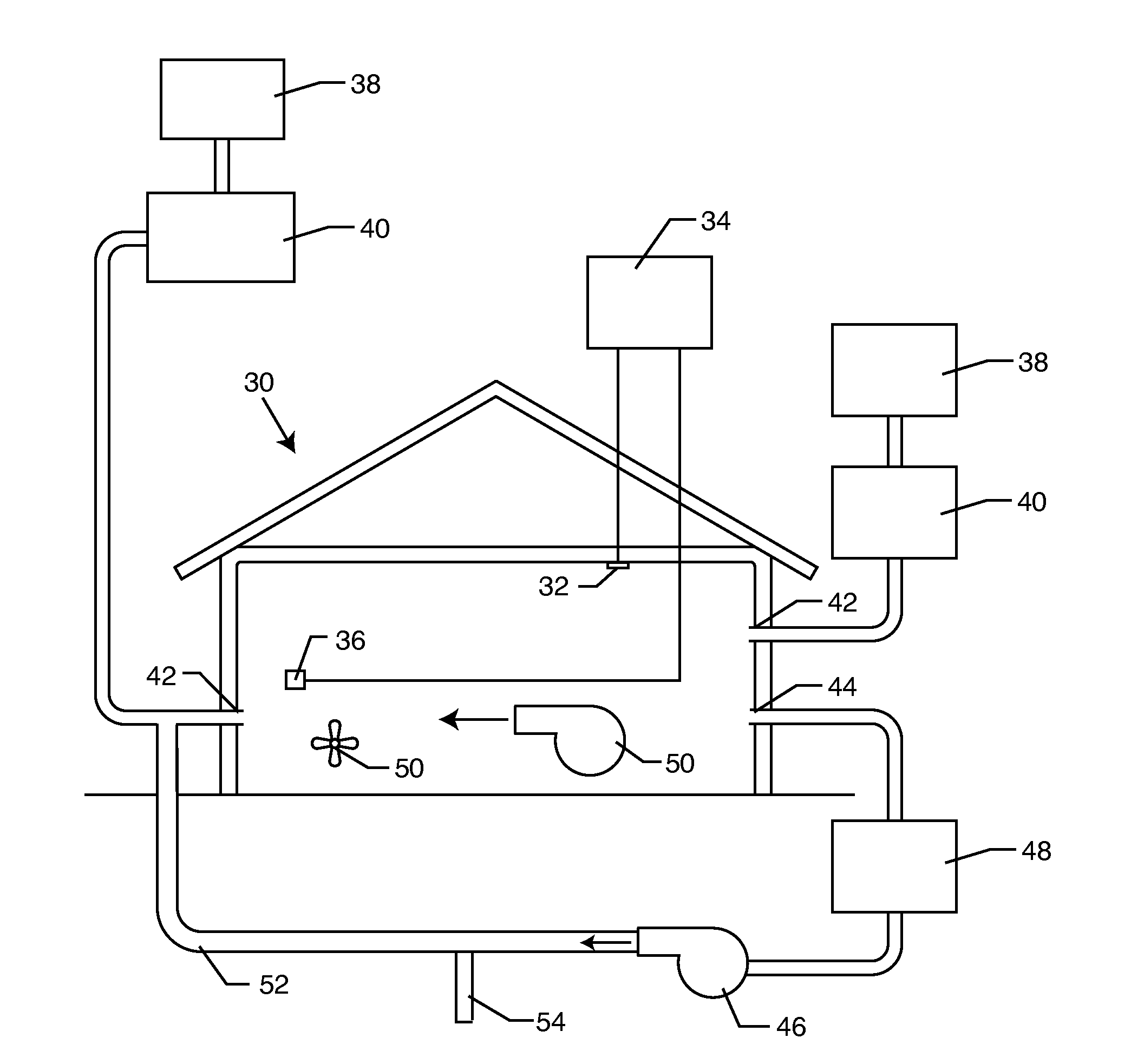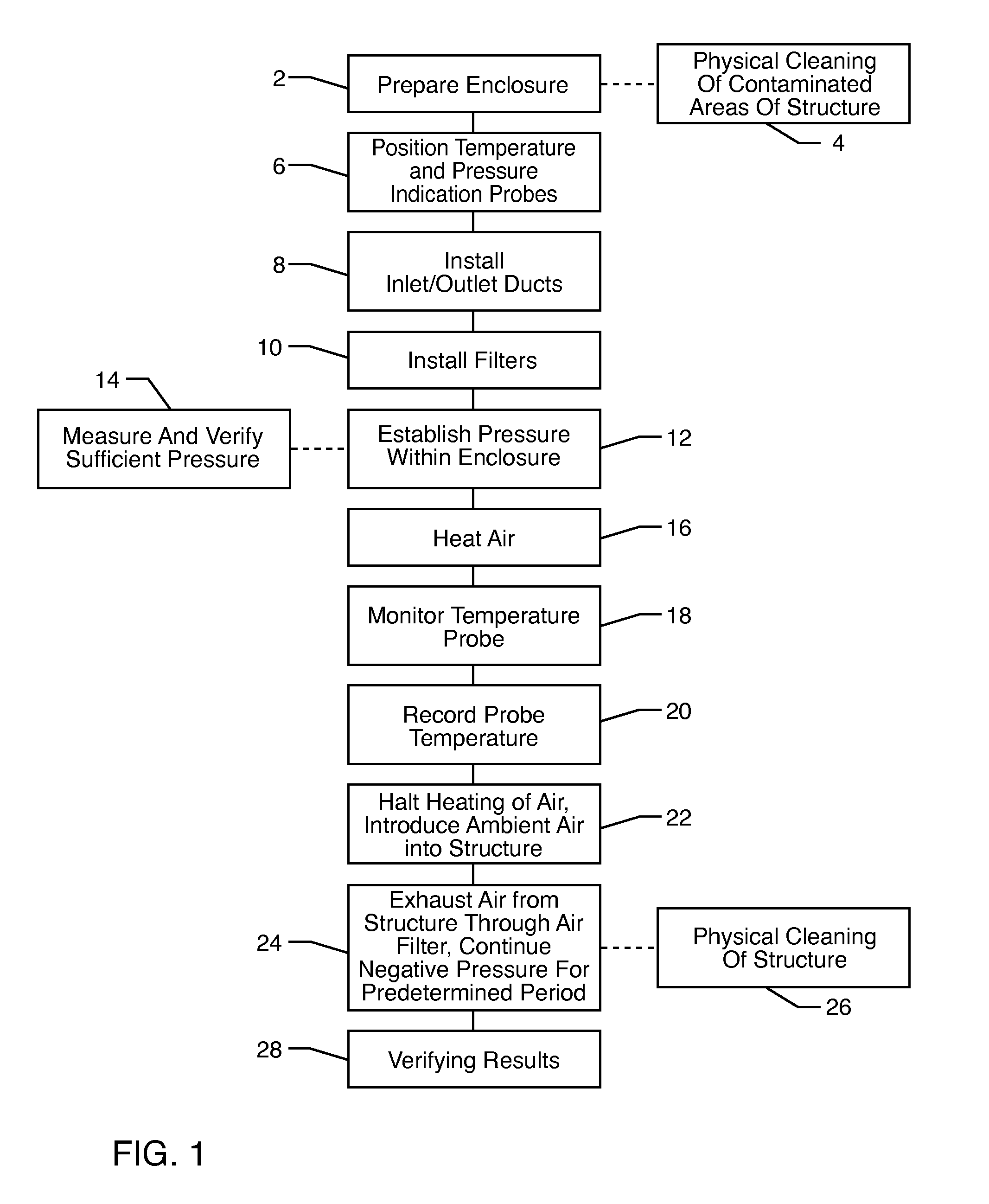Method for removing or treating harmful biological organisms and chemical substances
a biological organism and chemical substance technology, applied in the field of sanitizing structures and buildings, can solve the problems of stinging unsuspecting adults or curious children or animals, requiring 12 to 72 hours to be effective, and achieve the effect of facilitating their removal
- Summary
- Abstract
- Description
- Claims
- Application Information
AI Technical Summary
Problems solved by technology
Method used
Image
Examples
Embodiment Construction
[0051]As shown in the accompanying drawings for purpose of illustration, the present invention is related to a system and method for treating structures, such as human occupiable buildings, vehicles and other enclosures. In accordance with the present invention, heating of the air is primarily used to treat such structures so as to remove and / or denature harmful organic substances, such as VOCs, MVOCs (microbial volatile organic compounds), microbiological agents such as bacteria and viruses, and pests such as bed bugs, scorpions, etc. and their allergens from an enclosure. For purposes of explanation, components of the invention which are identical or similar to one another may be labeled with the identical reference number.
[0052]With reference to FIG. 1, in the operation of the system of the invention, the first step is to prepare the structure, as indicated in block (2). This may require removing all heat-sensitive items from the enclosure or, in some cases, covering heat sensiti...
PUM
| Property | Measurement | Unit |
|---|---|---|
| temperature | aaaaa | aaaaa |
| shrinkage | aaaaa | aaaaa |
| shrinkage | aaaaa | aaaaa |
Abstract
Description
Claims
Application Information
 Login to View More
Login to View More - R&D
- Intellectual Property
- Life Sciences
- Materials
- Tech Scout
- Unparalleled Data Quality
- Higher Quality Content
- 60% Fewer Hallucinations
Browse by: Latest US Patents, China's latest patents, Technical Efficacy Thesaurus, Application Domain, Technology Topic, Popular Technical Reports.
© 2025 PatSnap. All rights reserved.Legal|Privacy policy|Modern Slavery Act Transparency Statement|Sitemap|About US| Contact US: help@patsnap.com



